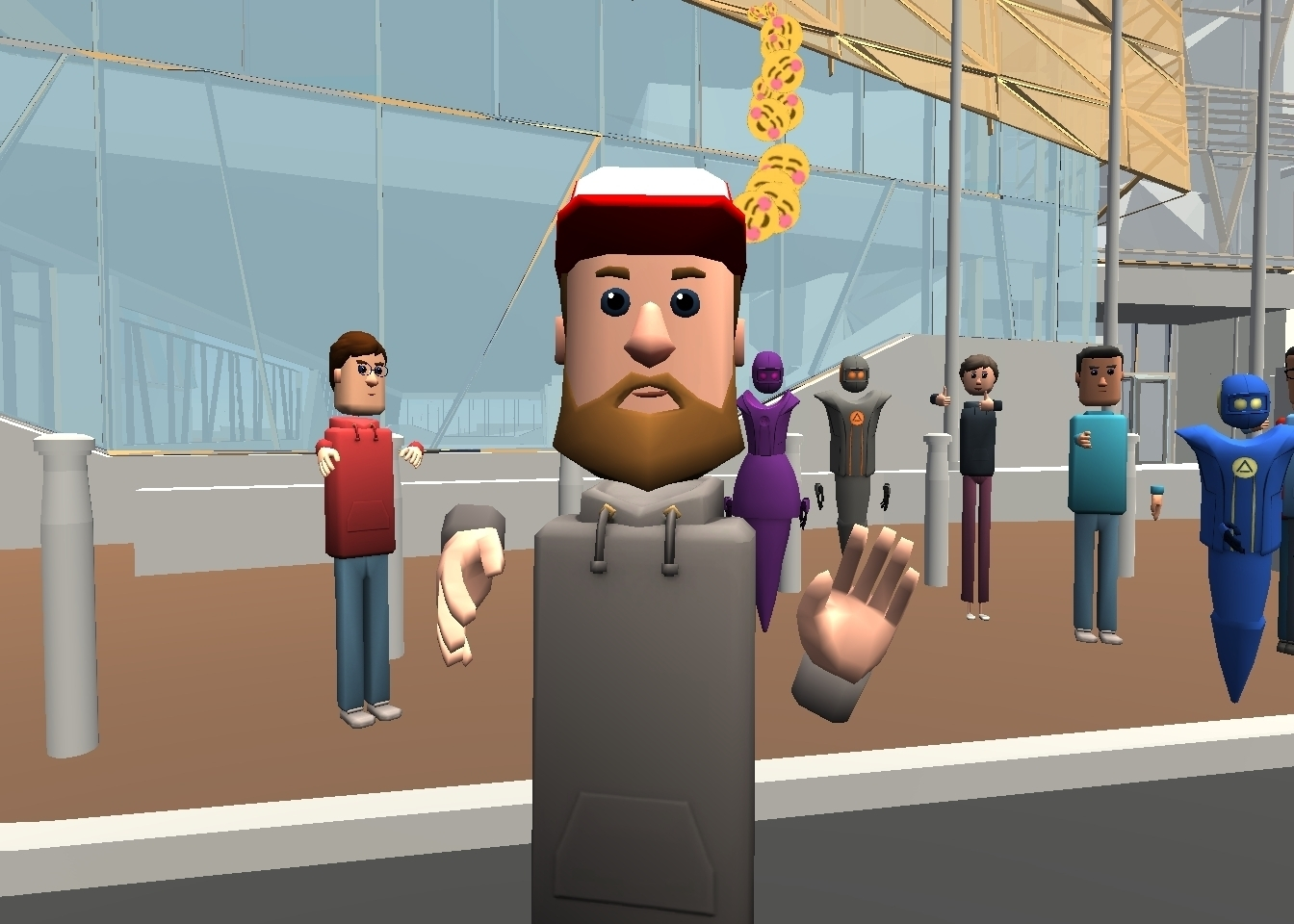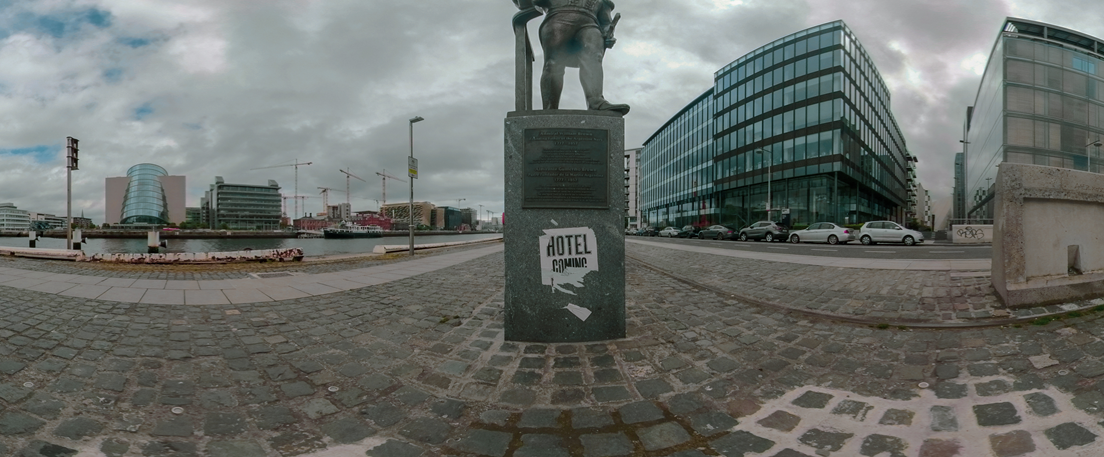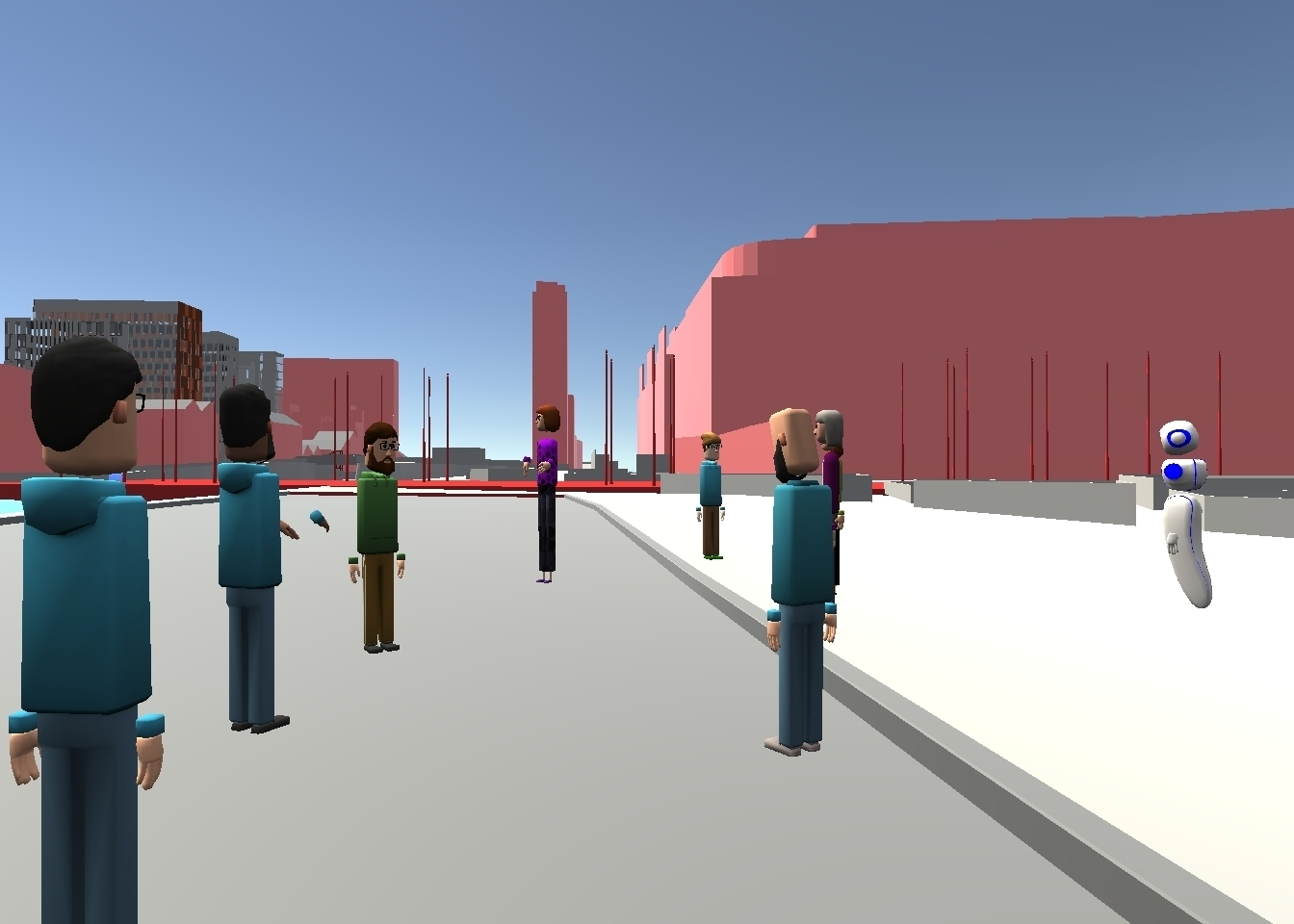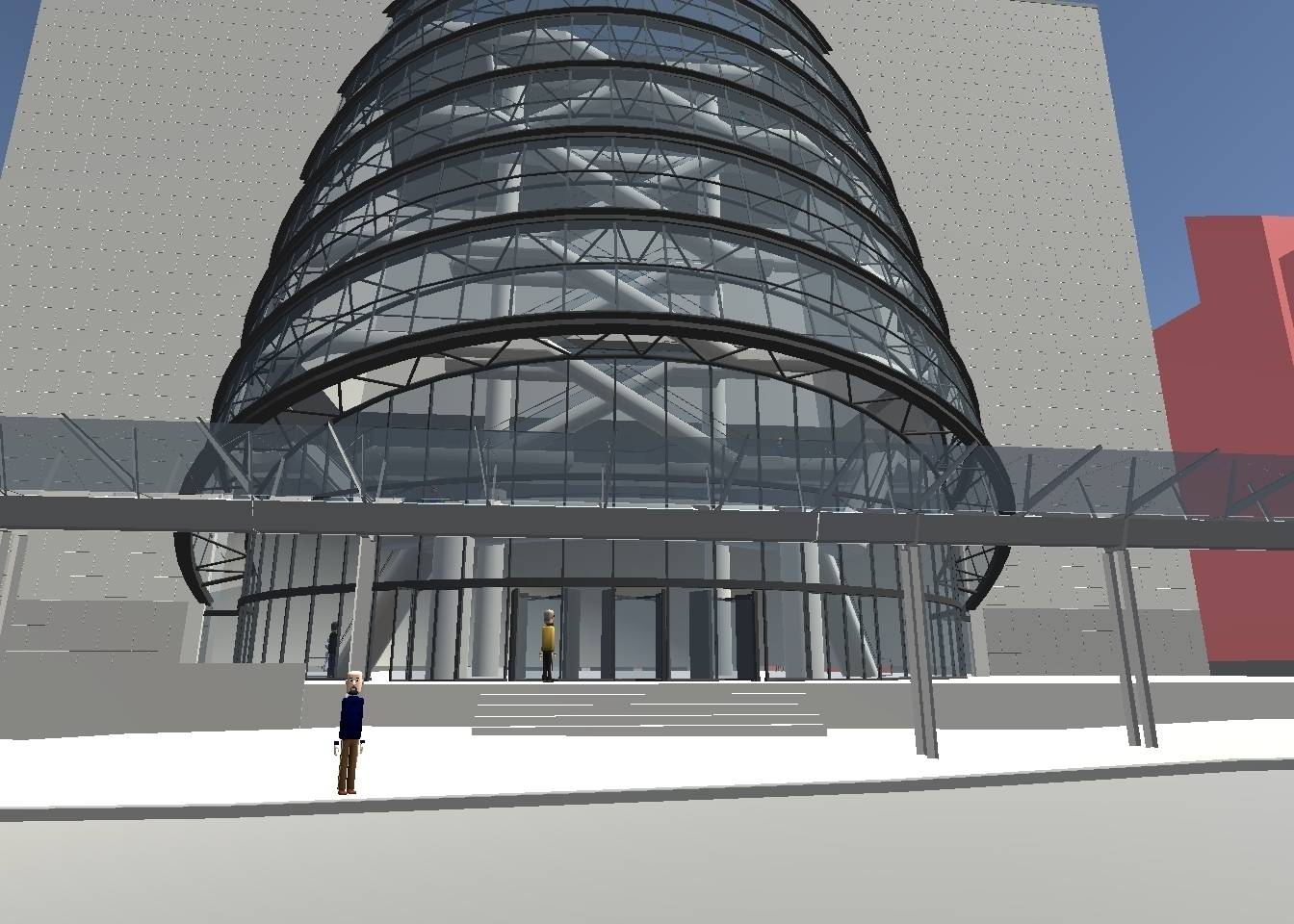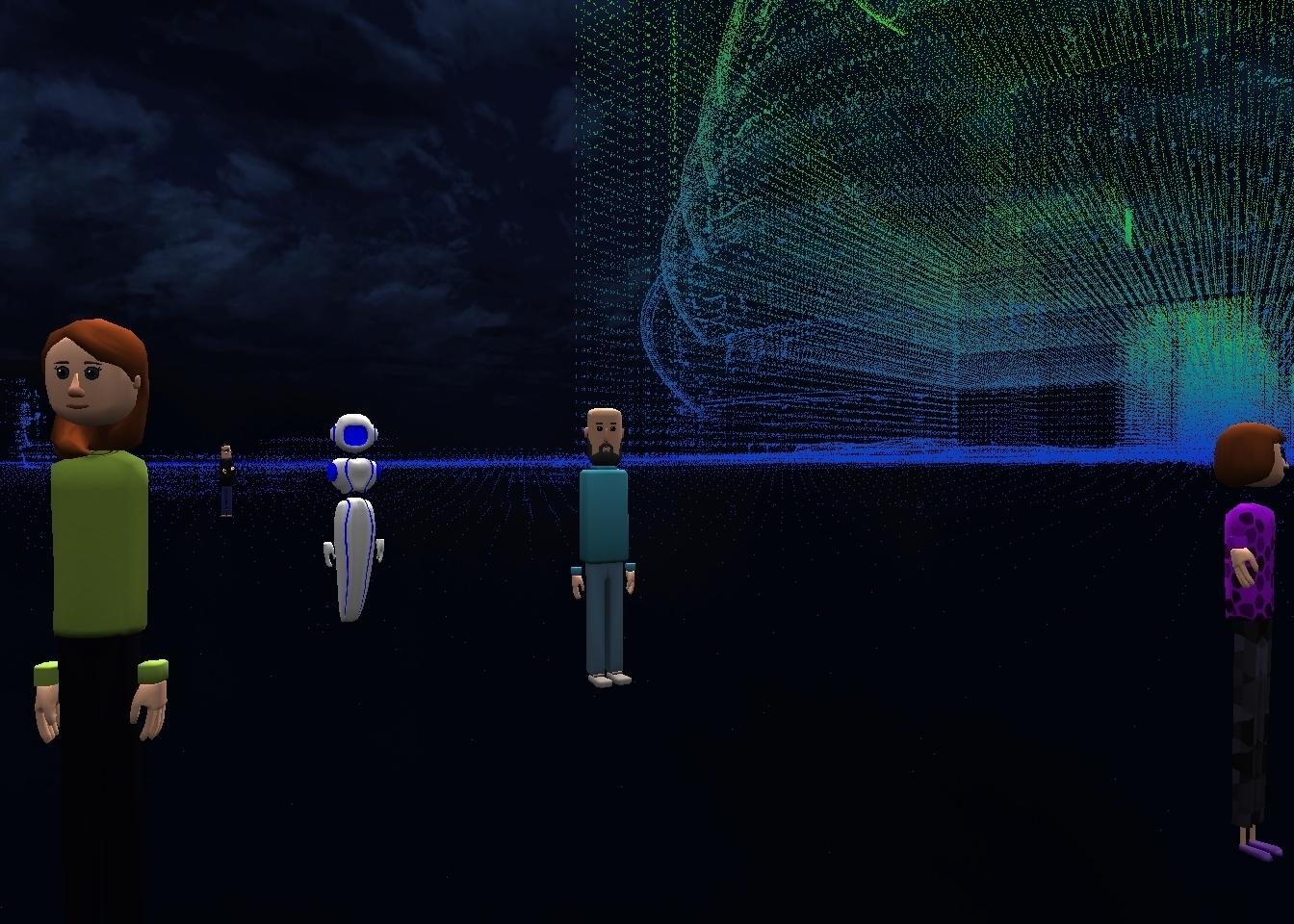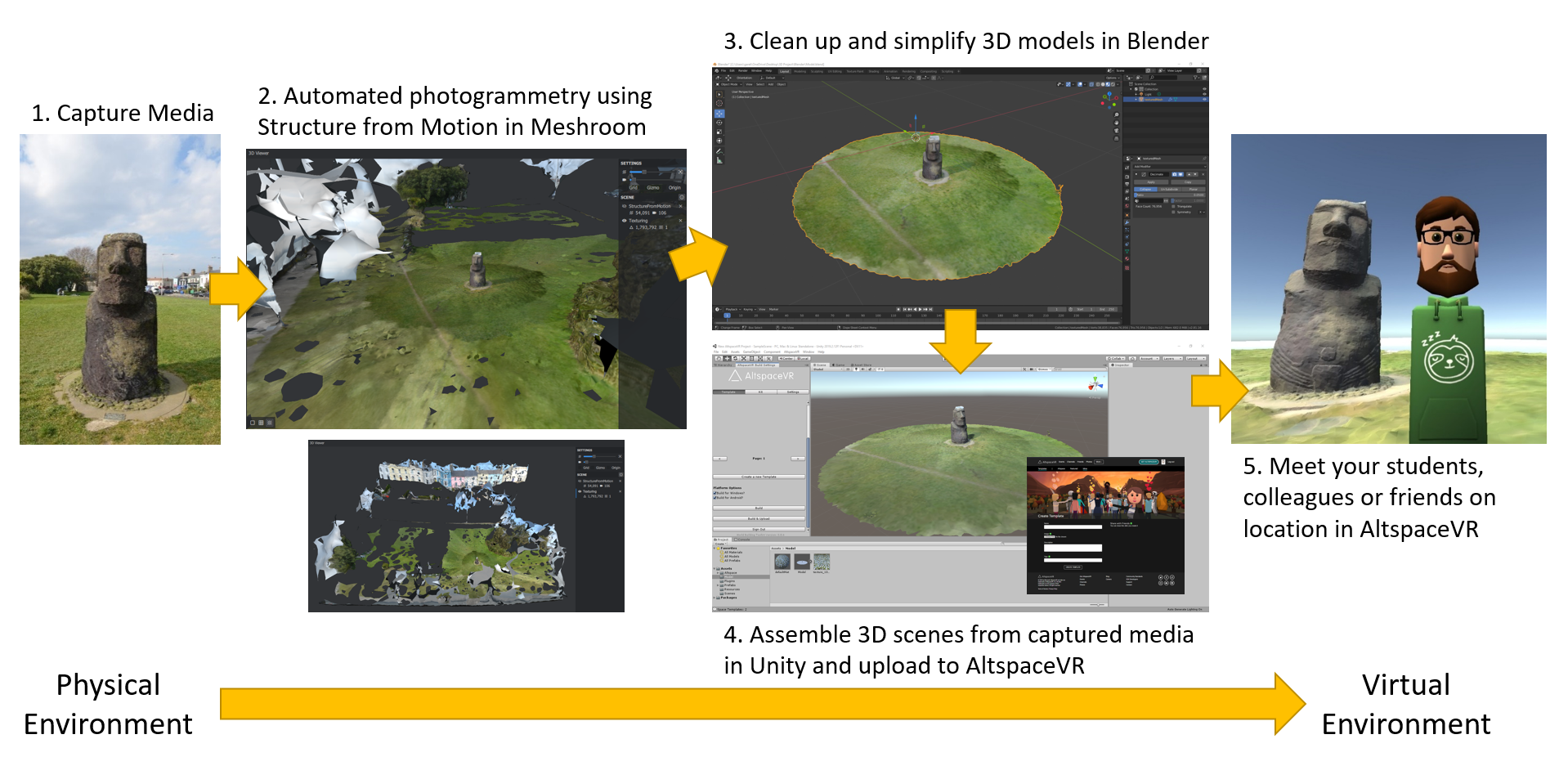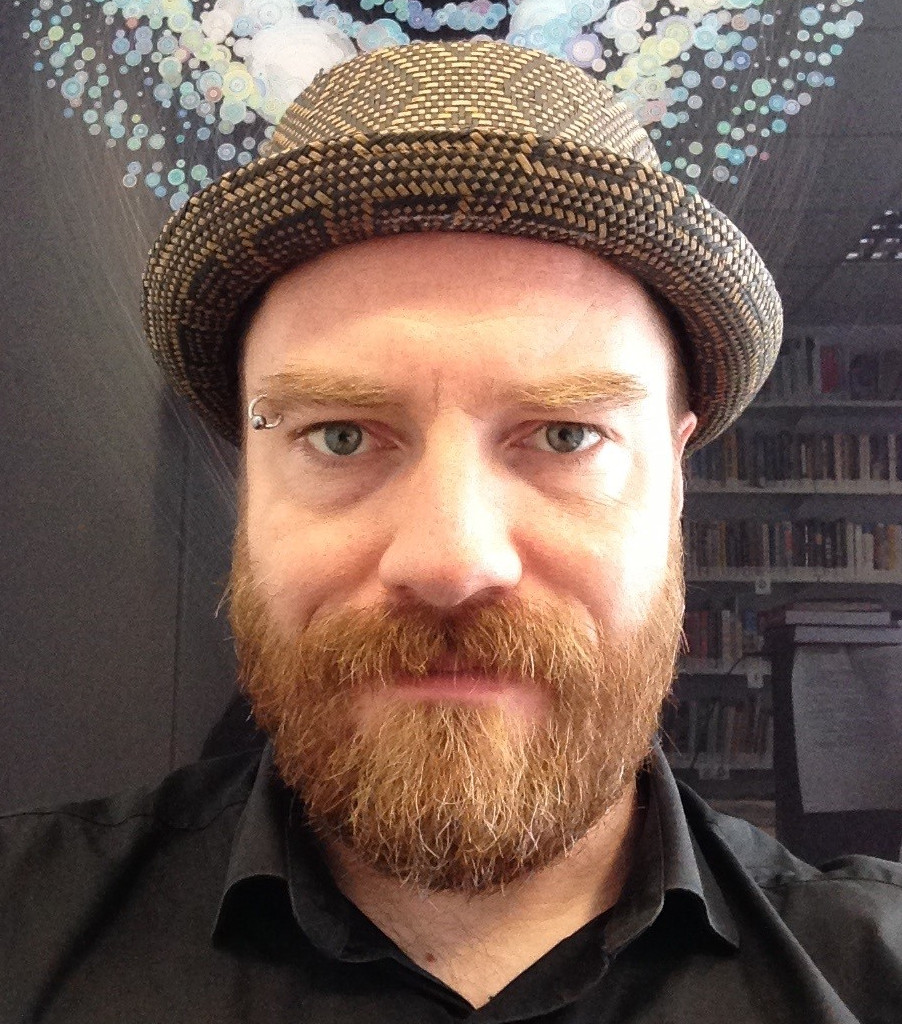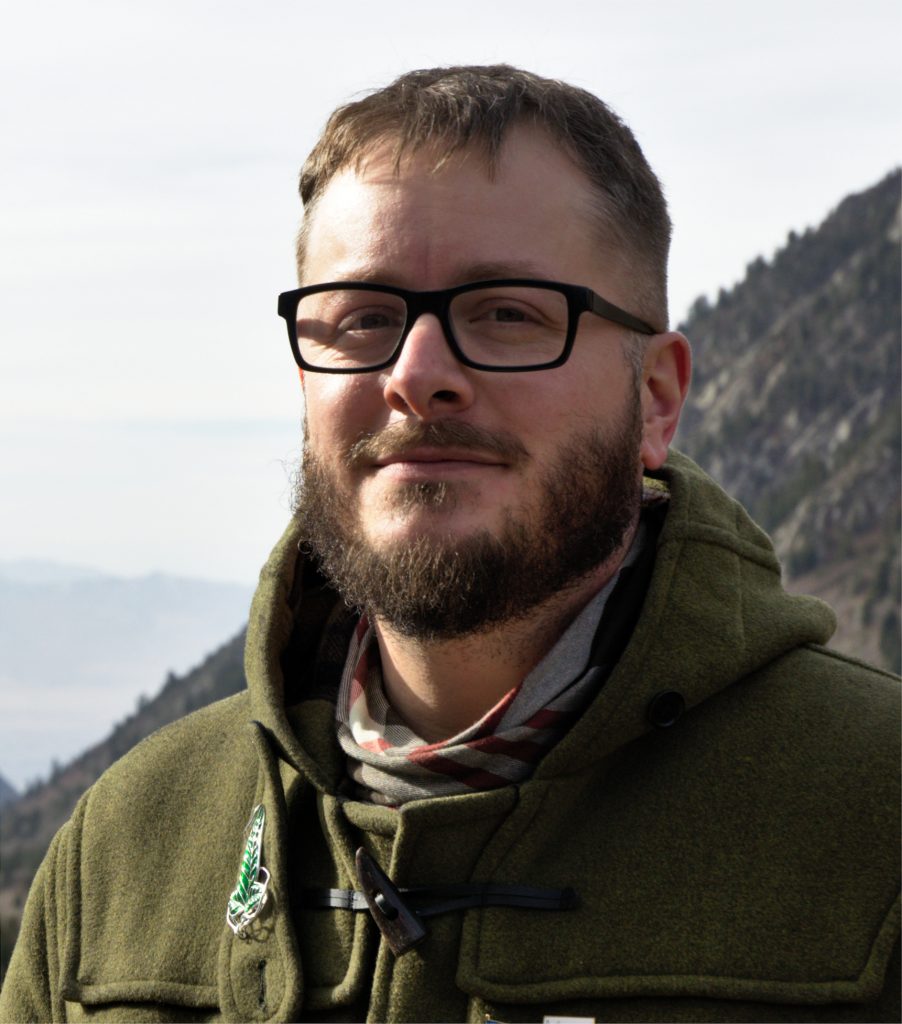About
This workshop will provide iLRN 2020 delegates with an opportunity to extend their knowledge of shared immersive virtual environments (IVEs) in the context of teaching and learning through co-creation. The workshop will begin by outlining methods for capturing digital media in-situ, establishing the 'ground truth' of a place as both as teaching preparation and as a learning activity in its own right.
The workshop will then demonstrate how data captured in physical locations can be incorporated into online 3D models that can be experienced via social virtual reality (VR) as a 'virtual field trip'. This activity highlights the active and constitutive role of the student in the selection and capture of data representing their environment, and its value as a means for encouraging active learning through imaginative engagement with the creation of IVEs.
Workshop participants will be taken on a virtual expedition into one such model to stimulate further discussion about how these environments can be used to promote active learning. While the session focuses on the use of captured media to establish the ground truth of a location, the session will also consider the further potential of social IVEs as opportunities for storytelling, repositories of shared experience, and as a means for imagining and experimenting with counter-factual histories and alternative futures.
For more information read the workshop proposal: Ground Truthing and Virtual Field Trips
